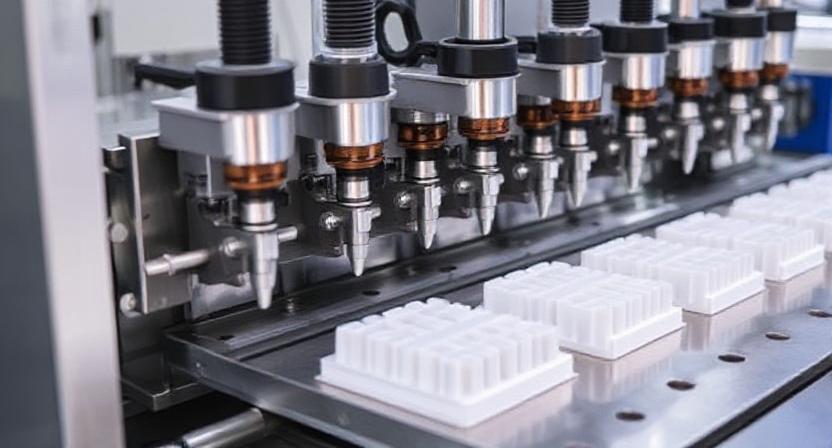In today’s fast-paced market, plastics manufacturers are under constant pressure to deliver high-quality parts quickly. Whether it’s for automotive, medical, packaging, or consumer products, businesses want their orders completed on time—sometimes even ahead of schedule. That’s where reducing lead times becomes important.
Lead time is the whole amount of time between getting an order and sending out the finished product. In the world of injection-molding, a long lead time can cause delays, increase costs, and even result in lost business. This article explores simple and effective ways to reduce lead times in injection-molding by improving workflows and focusing on smarter processes.
Why Reducing Lead Time Matters?
Lead time affects everything in a production line. It changes delivery times, how happy customers are, and overall costs. In the case of plastics companies, cutting down on lead time can mean:
- Faster deliveries to customers
- Better use of machines and manpower
- Lower storage and inventory costs
- A stronger position in a competitive market
In simple terms, when the production process runs smoothly and quickly, everyone wins. Customers are happy, manufacturers save money, and the business grows.
Optimize Mold Design Early
One of the best ways to reduce lead time is by focusing on mold design from the beginning. A well-designed mold helps avoid problems later in the production process.
Here’s how:
- Keep it simple:
Simple mold designs are faster to make and easier to use. Complex shapes can cause delays and problems. By keeping the design clean and straightforward, manufacturers can save time, reduce errors, and keep the production process smooth.
- Use digital simulations:
Before making the real mold, use 3D software to test the design. This helps find any problems early, so they can be fixed before production starts. It saves time, money, and avoids issues during the actual manufacturing process.
- Plan for production:
When you make the mold, you should think about how it will be used during production. Not only should it look good, but it should also be useful. A mold that is simple to use helps people get their work done faster and without having to wait.
Spending extra time on the design phase may seem slow at first, but it helps avoid major delays down the road.
Use the Right Materials
How well the injection-molding process works depends a lot on the material that is used. Plastics that aren’t up to par or aren’t right for the job can cause problems, slowdowns, or even the need to redo whole parts.
Here are some simple tips:
- Choose materials that match the product’s purpose:
Pick materials that are right for the job. Choose a type of plastic that works well for the job. When it comes to medical use, strong, safe materials are best. For packaging, light plastics work great. When you pick the right thing, it will work better and last longer.
- Work with reliable suppliers:
Choose suppliers who deliver on time and offer good-quality plastic every time. This avoids delays and surprise problems. A steady supply means your production keeps moving without stops, helping you finish orders faster and meet deadlines easily.
- Test the material:
Before you use a new plastic, do a small test run with it. You can see how it works with your machines this way. You can fix any problems early on, before production starts, so you don’t waste time or materials.
For plastics manufacturers, having the right material on hand at the right time makes a big difference in keeping production on track.
Improve Machine Maintenance
Well-maintained machines are key to fast and trouble-free injection-molding. When a machine breaks down, it stops the entire production line, leading to delays and extra costs.
To prevent this:
- Schedule regular maintenance:
Even if machines look like they’re working fine, you should still check them often. This helps find small problems early on, before they get worse. A lot of checks help keep things in good shape and stop sudden problems that slow down work.
- Keep spare parts available:
Keep extra parts ready in case something breaks. When parts aren’t available, work can stop for hours or even days. If you have the part already, you can fix the machine quickly and get back to work with less delay.
- Train staff to spot warning signs:
Show your team how to spot signs like odd sounds or small mistakes. Most of the time, these mean something is wrong. If workers tell you about problems early, they can be fixed quickly, before they stop the machine or make the job take longer than planned.
Proper maintenance ensures that machines stay in good shape, work faster, and deliver consistent results.
Train Your Team
A well-trained team is just as important as good machines. People who know how to use the equipment properly can spot problems early, avoid mistakes, and work more efficiently.
Here’s how training helps reduce lead time:
- Fewer errors mean less rework:
Workers commit significantly fewer errors when they are adequately instructed. This results in the production of parts that are accurate from the outset, which saves both time and materials. A faster production process and the ability to meet deadlines without stress are the results of reduced rework.
- Speed and confidence:
When people are trained, they know exactly what to do and can finish tasks faster and with more confidence. They don’t guess or ask questions, which saves time and helps the team work better. Projects stay on schedule.
- Cross-training:
Teach workers to do more than one job. If someone is absent or if more help is needed, others can step in. This flexibility keeps production moving and helps avoid delays when the team is short-handed.
For plastics manufacturers, investing in training pays off in faster, smoother production with fewer delays.
Use Automation and Smart Tools
Automation is a great way to make injection-molding more efficient. While not every part of the process can be automated, using machines for repetitive or time-consuming steps can save a lot of time.
Some examples include:
- Automatic mold changers:
It’s easy for these machines to switch out molds quickly without stopping the whole line of work. It takes a lot longer to do it by hand, so this is much faster. Plus, it speeds up the time it takes to switch between jobs, so everything runs smoothly all day.
- Robotic arms:
The arms of robots can move parts, cut off extra plastic, and pack things, among other things. They work fast and don’t get tired, which helps speed up production and lets workers focus on other important tasks.
- Real-time tracking systems:
These systems indicate each component’s location in the manufacturing process. Should anything slow down or stop, the team immediately notices it. This helps fix problems faster and keeps the whole operation running without delays.
Plastics manufacturers can use smart tools to reduce errors, accelerate production, and deliver products more quickly.
Work with Trusted Partners
Your suppliers, toolmakers, and logistics providers all play a role in reducing lead time. When one part of the chain is slow, it affects the whole process.
Here’s what helps:
- Choose suppliers with a strong track record.
Choose suppliers that always show up on time and give you good materials. Good suppliers keep you from having to deal with delays and unpleasant surprises, which lets you keep your production going smoothly and meet your customers’ deadlines without any issues.
- Communicate clearly
Tell your suppliers early on what you need and when you need it by. We can stay on track better if everyone knows what the plan is. Making sure everyone is on the same page helps keep things running smoothly and avoids confusion at the last minute.
- Build long-term relationships
Stick with suppliers who know a lot about what you do. They learn what you need over time and can help you more when things get busy. If you have a good partnership, you’ll get better help, faster service, and fewer problems when you need to get things done quickly.
Trusted partners help plastics manufacturers keep their process moving smoothly from start to finish.
Finishing Strong with Better Planning
Reducing lead times in injection-molding doesn’t require a complete overhaul of your factory. Small improvements in mold design, material selection, machine maintenance, staff training, automation, and supplier relationships can lead to big results.
By focusing on these steps:
- Design smarter molds
- Choose the right materials
- Keep machines in top shape
- Train your team well
- Use helpful automation tools
- Work with reliable partners
Companies that make plastics can meet tight deadlines, keep customers happy, and grow their businesses.
You’re one step closer to a faster, more efficient production line with every change, no matter how small. Make one change today, and tomorrow the whole process will work better because of it.



